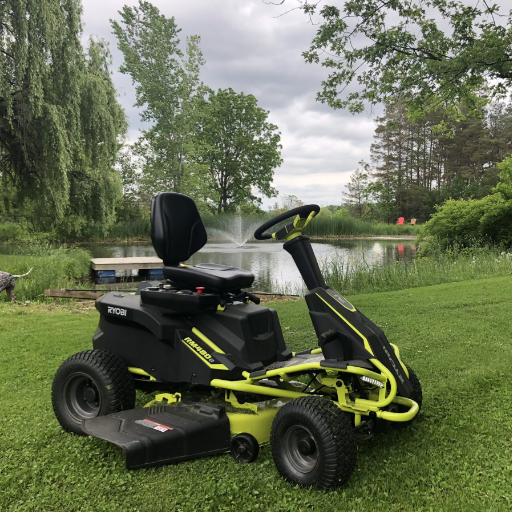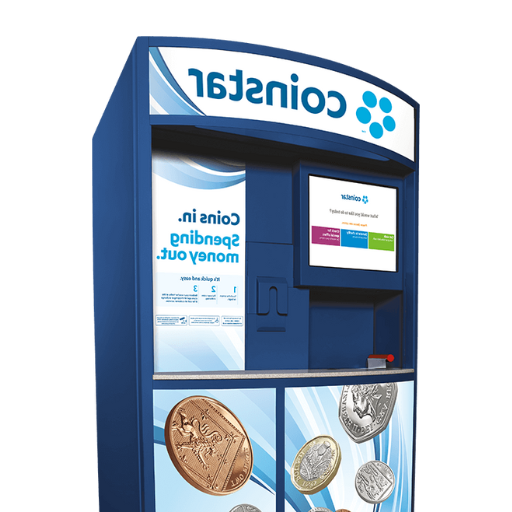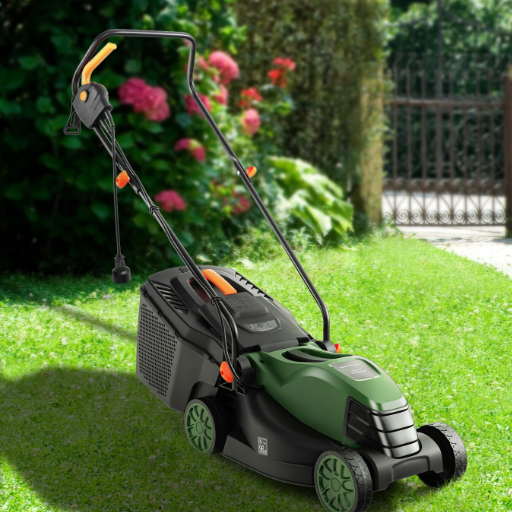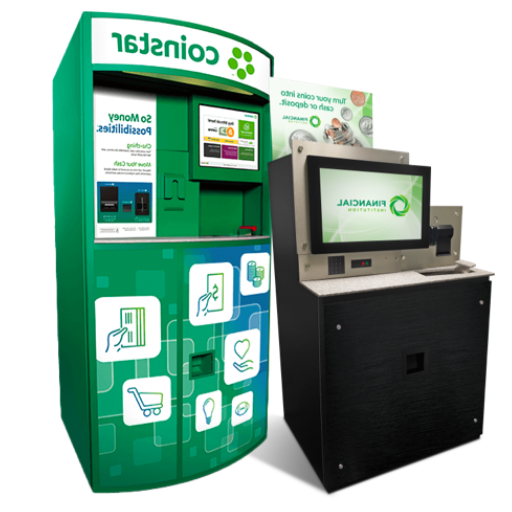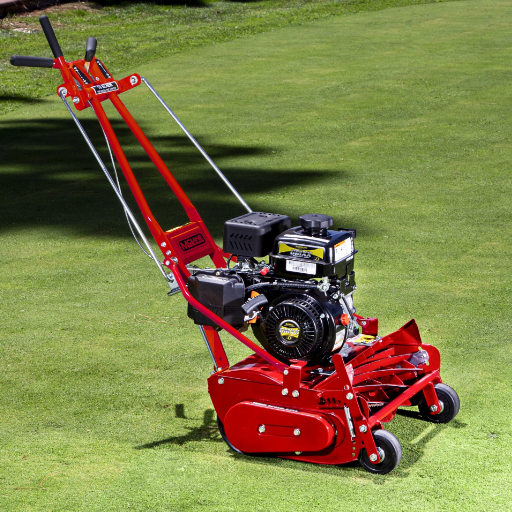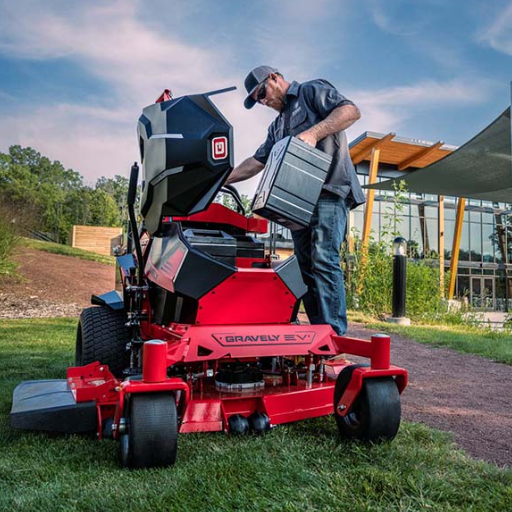Many people take pride in maintaining a beautiful, healthy lawn, yet the task is always full of time, effort, and choosing the right contractor for it. The self-propelled motor mower of today is one of the lawn maintenance paradigm shifts that went through efficiency and convenience to accomplish a neat lawn without sweating it. In this article, we look at everything about self-propelled motor mowers: how they operate, their benefits, and how to decide on the right model for your needs. Whether you are new to lawn care or just trying to improve your toolbox, this blog will give you everything you need to know so you can step up your lawn maintenance career.
Understanding Self Propelled Lawn Mowers

Self-propelled lawn mowers represent some of the most powerful tools ever designed to make lawn care easier and more efficient. Unlike traditional push mowers, self-propelled mowers are fitted with motors, the wheels of which are driven by the motor, so the operator will only need minimal force to propel the mower ahead. This is best for medium-to-large lawns subjected to sloping or uneven terrain. Depending on the model, the speed can be regulated to suit the walking pace of the operator, ensuring comfort and convenience. The power source can be gasoline or electricity. One must consider power output, environmental impact, and maintenance while making a choice. This option is a good one for anybody wanting to expedite lawn work.
What is a Self Propelled Lawn Mower?
Self-propelled mowers generally have some kind of drive mechanism powering the wheels, allowing the mower to move forward without manual help. These mowers have a throttle or a lever that is able to vary the speed and direction of the mower as it traverses across different terrains. They are driven by engines or motors, powered on gas or electricity, which provide traction through the wheels besides running the blades, making them quite advantageous in slanting and uneven building environments.
More power and therefore are best suited for big lawn areas; Gas-powered self-propelled mowers, however, are maintenance-heavy with oil change and air filter replacement being the common maintenance activities. Electric mowers can be corded and cordless. They offer low-maintenance, quiet operation, and a green choice. Lithium-ion batteries come with the cordless models, with some available batteries offering enough charge for half-acre mowing capacity depending on battery capacity.
How Self Propelled Mowers Work
The drive system of a self-propelled mower propels the machine forwards, greatly reducing the human effort required to move it. Depending on the terrain, they undergo front-wheel, rear-wheel, and all-wheel-drive patterns. Front-wheel-drive mowers are best fitted for flat surfaces where the user can easily pivot to maneuver, while rear-wheel-drive is preferred for traction over slopes and uneven terrains. All-wheel-drive mowers offer traction equally on all four wheels and are best suited for difficult landscapes.
The motor or engine is at the center of self-propelled mowers, responsible for turning the cutting blade and driving the wheels that provide movement. The modern gas mowers generally accommodate an engine that is more than 140cc and less than 200cc in capacity; thereby imparting fair strength to mow dense grasses and large yards. In contrast, battery-powered self-propelled mowers utilize lithium-ion batteries that are from 40 volts to 80 volts, which keep the machine running for about 60 minutes on a full charge, depending on conditions such as grass height and density.
Other features in variable-speed self-propelled mowers usually allow the operator to adjust the speed with his walking pace and include mulching or bagging functions for the easy disposal of grass clippings. These cutting machines have become favorites on both small and big lawns due to their ease of use, adaptability to various terrains, and efficient performance.
Benefits of Using a Self Propelled Lawn Mower
Self-propelled lawn mowers offer a host of advantages that make them an option worth considering by the homeowner, providing efficiency and ease in operation. One advantage of these mowers is that their weight and manual driving effort tend to cause more fatigue than self-propelled types. In this context, these mowers are beneficial for larger lawns or oblique landscapes where manual mowing would become very taxing and cumbersome.
Speed adjustments of self-propelled mowers to allow owners to match speeds according to their preference have been touted. According to research on ergonomic tools, such custom settings may reduce physical fatigue by almost 30 percent during yard work. The modern-era models, moreover, are equipped with some of the ideal cutting systems, like mulching, which improves soil quality by providing it with finely ground grass clippings acting as fertilizer. This lease for sustainable lawn practices as opposed to spending more time with fertilizer application.
The other main advantage of keeping with varied terrain characteristics is the fact that they are more effective than conventional push mowers due to their comparatively powerful engines or battery systems that enable them to work on any flat or uneven terrain. For instance, as per the latest statistics from the industry, a high-performance one can cover mowing on two acres in a single charge, hence best for medium to large size landscapes.
The other incredibly time-saving aspect merits an emphasis. Homeowners upgrading to self-propelled mowers claim that they spend 40% less time mowing than with hand-powered models. Such efficiency combined with user comfort makes self-propelled mowers a worthy investment toward keeping a lawn neat with less toil and more ease.
Types of Self Propelled Mowers
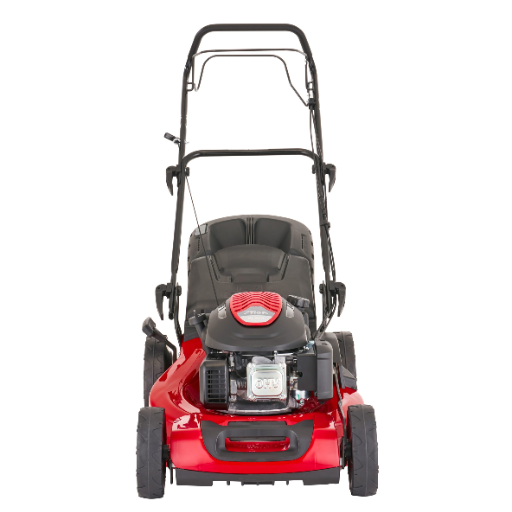
Self-propelled mowers are categorized into gas-powered, electric (battery or corded), front-wheel drive (FWD), and rear-wheel drive (RWD).
|
Type |
Power |
Drive |
Terrain |
Cut Width |
Features |
|---|---|---|---|---|---|
|
Gas |
Gasoline |
FWD/RWD |
Hilly/Flat |
21-28 inches |
High power |
|
Electric |
Battery |
FWD/RWD |
Flat |
20-22 inches |
Quiet, eco |
|
Corded |
Electric |
FWD |
Small yards |
16-21 inches |
No recharge |
|
FWD |
Any |
FWD |
Flat |
Varies |
Maneuverable |
|
RWD |
Any |
RWD |
Hilly |
Varies |
Stability |
Gas Engine Lawn Mowers
Gas engine-powered lawn mowers are widely acknowledged for their powerful performance and reliability and stand atop every homeowner’s preference for large yards or challenging terrain. Such mowers harness the power of the internal combustion engine usually fueled by gasoline, allowing them to sustain cutting power even under heavy dirt. Generally, the motors fall within the range of 140cc to 190cc, delivering enough torque to grab tall grass or bumpy terrain without a hitch.
Also contributing to the wide array of choice for any gas engine-type mower is the cutting width, usually ranging from 20 to 30 inches for the majority of models. With such a width available to the operator, time to mow vast lawns is greatly shortened against smaller electric or manual mower counterparts. Modern gas mowers will also typically have an adjustable height setting to allow customers to adjust the grass length as per their requirement for that professional-level finish.
But, as far as maintenance goes, gas-powered mowers will do require regular maintenance to ensure their durability. Maintenance includes oil checks and changes, air filter cleaning or replacement, and blade sharpening. Nonetheless, a gas engine mower offers the best value for durability and performance in lawn maintenance equipment.
Electric and Battery Powered Options
Electric and battery-powered mowers have greatly caught on and have moved into the forefront in the past decade with technology coming in. These two types of mowers characterized by the noise-free cutting action, very little emission, and easy handling. Modern corded electric mowers deliver steady power and easy plugging into any outlet nearby. With corded models, battery life is not a constraint, best for small- and medium-sized yard work.
On the contrary, battery-powered mowers offer the finest mobility and convenience put a cord between your legs. Most of the high-end ones are equipped with rechargeable Li-ion batteries allowing discharge for 60 minutes or more depending on the capacity of the battery. For example, a 40V mower with a 6.0Ah battery can cover up to 10,000 square feet on one charge. Today, some models also feature interchangeable batteries so that the same battery can be used in a number of other tools from the same manufacturer, thereby making it all very versatile within any homeowner’s toolbox.
These lawnmowers need much less maintenance than gas mowers. No gas, oil changing, or replacement of spark plugs is necessary. You only have to keep sharp blades and maintain your battery well. Charging time also has come down in recent years, with many systems now able to recharge a completely depleted battery in under two hours.
Modern studies have revealed that these mowers give out much lesser pollution as compared to that of the gas mowers. Electric and battery-powered mowers will serve the environment best through less air pollution from mowing. Although such mowers are costlier at the time of purchase, their savings in terms of fuel and maintenance in the long run make them very appealing to the environmentally conscious homeowner.
Cordless Self Propelled Mowers
Advantages of Cordless Self-Propelled Mowers
Cordless self-propelled mowers combine the convenience of modern technology with environmental benefits, offering an efficient and eco-friendly lawn care solution. These mowers operate using rechargeable batteries, eliminating the need for gasoline and significantly reducing greenhouse gas emissions. Most models boast impressive runtimes, with advanced lithium-ion batteries providing up to 60-90 minutes of continuous mowing on a single charge, depending on the model and grass conditions.
Key Features and Performance
Cordless self-propelled mowers are designed to deliver powerful and reliable performance. Many models feature variable speed controls, allowing users to adjust the pace to suit their comfort level and the mowing terrain. Additionally, cutting decks typically range from 16 to 22 inches, enabling efficient coverage of small to medium-sized lawns. High-torque brushless motors are common, ensuring consistent power even in tough mowing situations, such as thick or tall grass.
Cost-Effectiveness and Maintenance
While the initial cost of cordless self-propelled mowers may be higher than that of gas-powered alternatives, they offer cost savings over time due to reduced fuel and maintenance expenses. Without the need for oil changes, spark plug replacements, or fuel refills, maintenance is simplified and more affordable. Over several seasons, these savings can make cordless models an economically sound choice for homeowners.
Environmental Benefits
Switching to a cordless self-propelled mower plays a crucial role in reducing air and noise pollution. These mowers operate quietly compared to their gas-powered counterparts, making them ideal for residential neighborhoods and early morning use. Additionally, they release no direct emissions, contributing to a healthier environment and supporting sustainable practices.
Advanced Features and Innovations
Modern cordless models often include advanced features like LED headlights for visibility during early mornings or late afternoons, intuitive push-button start systems for ease of use, and even smart app connectivity for monitoring battery levels and performance. Some high-end models are equipped with mulching, bagging, and side-discharge capabilities, offering versatility to meet various lawn care preferences.
Cordless self-propelled mowers represent a blend of efficiency, sustainability, and innovation, making them an ideal choice for homeowners seeking a cleaner and more convenient way to maintain their lawns.
Key Features to Consider

- Battery Life and Runtime: Look for a mower having adequate battery capacity to take care of your lawn size, so the battery will not get depleted very frequently and need charging. Longer runtimes translate to more convenience when one has a reasonably large yard to maintain.
- Cutting Width: A wider deck can reduce mowing time, as it covers more ground in each pass.
- Self-Propulsion System: Confirm whether the existing self-propelled system works with your terrain and offers adjustable speed for seamless action.
- Ease of Use: This means height adjustment with a single lever and easy-to-master controls.
- Maintenance Requirements: Look into low-maintenance types, including brushless motors, for durability.
- Versatility: Think about 3-in-1 mower functions like mulching, bagging, and side discharge so that they can apply to different lawn-making requirements.
Cutting Width and Deck Size
The width and deck size of any mower are critical considerations because these factors influence how efficiently the mowing can go about the business of lawn care. The cutting width usually can range anywhere from 14 inches for compact electric mowers to above 60 inches for heavy-duty-type riding mowers meant for huge properties. For the standard residential lawn, it is best to have a cutting deck of 20 to 22 inches, giving a good blend of maneuverability and coverage. Decks over 30 inches are more appropriate for wider areas because they enable one to cover more area with one pass, thus less time spent on mowing. Conversely, small decks of 16 to 19 inches are ideal to maneuver about tight spaces or complicated landscaping.
Consider the terrain while contemplating the size of the deck. Wide decks lose their efficiency across uneven grounds or terrains filled with obstacles, where a more compact model, in contrast, would afford precision. Usually, bigger decks mean bigger engines, which in turn means stronger capacity to cut across all sorts of grounds evenly. So, take the shape of your yard along with its size, and choose that mower deck which fits your property needs and expectations for time saving in tandem.
Power Sources: Gas vs. Electric
Gas mowers are powerful and suitable for large, tough terrains, while electric mowers are quieter, eco-friendly, and ideal for small to medium lawns.
|
Parameter |
Gas Mowers |
Electric Mowers |
|---|---|---|
|
Power |
High |
Moderate |
|
Noise |
Loud |
Quiet |
|
Emissions |
High |
Zero |
|
Run Time |
Long |
30-60 mins |
|
Maintenance |
High |
Low |
|
Weight |
Heavy |
Light |
|
Cost |
Low upfront |
Low long-term |
|
Terrain |
Large, uneven |
Small, flat |
|
Startup |
Pull cord |
Button |
|
Storage |
Horizontal |
Vertical |
Wheel Size and Maneuverability
Wheel size plays an important role in the performance and ease of operation of the mower, especially considering different terrains. Larger rear wheels—typically 8- to 12-inches in diameter—provide great traction and stability on an uneven surface or certain slopes, making such mowers great for areas with hills or irregular terrain. Mowers with smaller wheels, which are generally considered to be between 6 and 8 inches, work best on flat, smooth terrains where stability and tight turning radius are needed.
Maneuverability is highly influenced by the various combinations of the related vehicle parameters, wheels, and mower design. For example, zero-turn mowers easily maneuver around obstacles such as flower beds, trees, and lawn decorations due to their ability to pivot. On the other hand, a push mower with adjustable wheel heights allows you to adjust the position of the deck for an even cut on less-than-perfect grounds. Among self-propelled models, the positioning and size of the wheels affect weight distribution; larger-diameter wheels tend to smooth weight transfer over bumps and dips.
For a home with mixed terrain, purchasing a mower with dual-size wheels-larger in the rear, smaller in the front-will give the mowers perfect control and maneuverability. Getting the right wheel configuration for the specific challenges of your lawn is crucial in getting the lawn to the next professional, uniform level in less time.
Buying Tips for Self Propelled Mowers
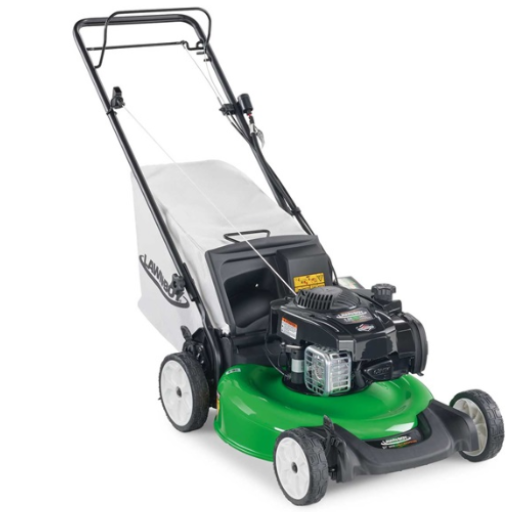
- Consider Your Lawn Size
For small to medium lawns, a mower with a smaller cutting deck (20-22 inches) is sufficient. Larger lawns may require a wider cutting deck for efficiency.
- Evaluate the Terrain
Flat lawns work well with standard wheels, but if your lawn has hills or uneven terrain, choose a model with high rear wheels for extra traction and control.
- Assess Engine Power
More powerful engines are ideal for thick or overgrown grass. For regular maintenance on lighter grass, a standard engine will work perfectly.
- Choose the Drive System
- Front-wheel drive is suited for flat lawns and allows for easier maneuvering.
- Rear-wheel drive provides better traction for slopes or uneven terrain.
- All-wheel drive works best for highly challenging, mixed landscapes.
- Look for Adjustable Speed
Opt for a model with variable speed control to match your mowing pace and comfort level.
- Inspect Build Quality
Ensure the mower is made of durable materials like steel or strong plastic to withstand regular use over time.
By selecting a mower based on these key factors, you can ensure a smoother, more efficient mowing experience tailored to your lawn’s specific needs.
Assessing Your Lawn Size and Type
Choosing the appropriate lawn care equipment requires an understanding of the lawn’s size and type. Smaller yards, usually less than 0.25 acres, would most likely require a smaller push mower or an electric corded mower. These are lightweight and easy to store, and being energy-conscious, they provide a great option in urban as well as suburban areas where space is limited. A medium-sized yard of 0.25 to 0.5 acres would be well-treated with self-propelled models with the least muscle work to cover a larger area.
Anything beyond half an acre would require gardening work with a riding mower or a zero-turn mower. For very large properties, riding mowers offer comfort and speed, whereas zero turns offer ease of maneuvering around trees and landscaping features. The type of grass installed on your lawn complicates your equipment choice. For example, thick turfgrass such as Bermuda or Zoysia might mandate mowing with high power settings or adjustable blade heights for better cutting; on the other hand, fine grasses like Fescue or Ryegrass are sometimes mowed with a standard setting. By analyzing your lawn size and considering grass specifications and personal requirements, you’ll have no difficulty picking the best option to maintain a healthy and vibrant landscape.
Comparing Different Brands: Greenworks, Stihl, and More
Greenworks offers affordability and versatility, Stihl excels in durability and bagging, while other brands like Ego and Ryobi focus on power and user-friendly features.
|
Parameter |
Greenworks |
Stihl |
Ego |
Ryobi |
|---|---|---|---|---|
|
Price |
Affordable |
Moderate-High |
High |
Moderate |
|
Durability |
Good |
Excellent |
Good |
Good |
|
Power |
Moderate |
Moderate |
High |
Moderate |
|
Features |
Versatile |
Bagging focus |
User-friendly |
Balanced |
|
Weight |
Light |
Moderate |
Heavy |
Moderate |
|
Runtime |
Moderate |
Moderate |
Long |
Long |
|
Cut Quality |
Good |
Excellent |
Excellent |
Good |
|
Eco-Friendly |
Yes |
Yes |
Yes |
Yes |
Budget Considerations for Your Purchase
When lawn care equipment is being selected, it is important to understand your budget and how it fits into the scope of your priorities. Consider lawn mowers: their price tends to vary widely depending upon features, brand reputation, and abilities. For residential purposes, electric models such as those in the Greenworks 40V series typically range from $250 to $500 and can be considered a budget-friendly option to treat smaller- to medium-sized lawns while being environmentally friendly. Gas-powered mowers go anywhere from about $350 to $700 and up, valued for the sheer power with which they can deal with larger tracts or tougher varieties of grass.
Also gaining in popularity with users is the cordless electric mower as it delivers good performance and lower maintenance costs, with prices running from $500 to $800 for the higher-priced models; however, prices can fluctuate greatly depending on whether features such as self-propulsion, variable blade heights, and extra battery life are included, all of which you will want to evaluate according to the specific needs and size of your lawn.
Refurbished or used equipment can also be another good choice for more frugal customers, with lots of stores giving discounts on returned or older gear. Think about replacement blades, batteries, and regular maintenance in the additional costs to be expected. When considering outlay versus value, a sound decision will be made that has practicality and is a good investment.
Maintenance of Self Propelled Lawn Mowers

Self-propelled lawn mower maintenance includes oil changes, blade sharpening, air filter cleaning, belt checks, and ensuring proper lubrication and spark plug replacement.
|
Parameter |
Details |
|---|---|
|
Oil |
Change regularly |
|
Blades |
Sharpen annually |
|
Air Filter |
Clean/replace |
|
Belts |
Check for wear |
|
Spark Plug |
Replace yearly |
|
Deck |
Clean regularly |
|
Fuel |
Stabilize/store |
|
Lubrication |
Apply as needed |
|
Battery |
Charge/replace |
|
Bolts |
Tighten/check |
Routine Maintenance Tasks
To maintain the longevity and efficiency of your self-propelled lawn mower, it’s crucial to adhere to a consistent maintenance routine. Below are key maintenance tasks to keep your mower in peak condition:
- Oil Changes
Regularly check and change the oil as recommended by the manufacturer, typically after every 20-50 hours of use, or at least once per mowing season. Using high-quality motor oil ensures smooth engine performance and prevents wear over time.
- Air Filter Replacement
A dirty or clogged air filter can reduce engine efficiency and increase fuel consumption. Inspect the air filter periodically and replace it at least once per season or after 25 hours of use. For washable filters, make sure they are thoroughly cleaned and dried before reinstalling.
- Blade Maintenance
Sharp blades are essential for a clean and even cut. Dull or damaged blades not only strain the mower’s engine but also harm the grass. Sharpen blades every 25 hours of mowing or as needed, and replace them if they show extensive wear or cracks.
- Spark Plug Care
The spark plug is a critical component for engine ignition. Inspect it annually for corrosion and residue, and replace it at least once a year or after 100 hours of use to ensure reliable starts and efficient operation.
- Cleaning the Deck
Grass clippings and debris can accumulate under the mower deck, leading to rust and reduced performance. After each mowing session, clean the deck with a garden hose or scraper to prevent buildup and extend the life of the mower.
- Inspect Drive Belts and Cables
Over time, drive belts and cables can wear out or lose tension, impacting the self-propelled mechanism. Check these components regularly for signs of damage or slack and replace them as needed to maintain proper function.
- Replace Fuel as Needed
Avoid using stale fuel, as it can gum up the carburetor and reduce engine efficiency. Always use fresh, ethanol-free fuel when possible, and consider adding a fuel stabilizer if storing the mower for an extended period.
- Check and Maintain Tires
For self-propelled mowers, tire condition greatly influences maneuverability. Ensure that the tires are properly inflated and inspect for wear or damage to prevent uneven cuts during operation.
By following these routine maintenance tasks, you can ensure that your self-propelled lawn mower operates efficiently and remains a valuable tool for years to come. Always refer to your mower’s user manual for specific recommendations tailored to your equipment.
Storage Tips for Longevity
Storing a self-propelled mower appropriately is essential to prolonging its life, especially during the off-season. The process involves first thorough cleaning, getting rid of lawn clippings, dirt, and any debris as these may promote rust and corrosion over time. Any extra attention has to go to cleaning the blade area and undercarriage. Afterward, a thin layer of lubricant can be spread on metal parts to prevent rusting.
For a petrol-powered mower, you want to treat the fuel system before putting it into long-term storage. A fuel stabilizer can be added to keep the gasoline from deteriorating, thereby protecting the engine. Alternatively, the tank could be emptied and the mower run until the fuel in the carburetor runs out-the stale fuel would be clogging things up otherwise.
Keep that mower somewhere dry and well ventilated so moisture does not even have a chance to settle. Elevate the mower a bit off the ground if possible so it does not sit on damp floors, then lay down a breathable tarp or a lawn mower cover to keep the dust and any unwanted critters away. For electric mowers, always disconnect the batteries and keep them in a cool, dry place to maintain their charge capability.
Last but not least, any mower must be stored following the makers’ instructions, since an inappropriate position might lead to leaking of oil or fuel in some models. This detailed regimen will not only bear upon the longevity of your mower but also promise a good start when the next mowing season offers itself.
Common Repairs and Troubleshooting
Lawn mowers, being any other machinery, may occasionally pose problems that require attention. Here are some common issues with lawn mowers and how to make sure the lawn mower gets back into working condition effectively:
1. Cannot Start Up
This is usually associated with a few main causes. One was the spark plug-worn out or dirty; it seemed to get replaced more or less as a fix. Consider the fuel system next: Old or contaminated fuel is a common culprit. Using fresh gasoline and cleaning (or replacing) the fuel filter can make a big difference. For an electric mower, ensure your battery is charged and all electrical connections are secure.
2. Uneven Cuts
Uneven cuts indicate dull or damaged blades. The blade-sharpening or replacing is quite straightforward. In addition, ensure that the mower is level by checking the wheel heights and adjusting if necessary. Consider that debris build-up under the mower deck may also affect its performance; thus, it is recommended to regularly clean this area.
3. Suddenly Stops in Mid-Operation
This is one of the most irritating things a lawn mower could do and usually fixable. Clogging of the air filter can restrict the air flow to the engine. Replacing or cleaning the air filter is a quick fix. It could be that your cutting deck is overloaded – try raising the cutting height to put less strain on the engine.
4. Excessive Vibration
A mower vibrating excessively could be caused by an unbalanced or bent blade. Check the blade and replace it if required. Look out for any loose components such as bolts or engine mounts, and tighten these as necessary to provide stability.
5. Smoke from the Mower
The smoke is an alarming sight but very often it is due to spilled oil or oiling up excess. Mop excess oil and make sure the mower has proper oil levels. Keep watching for smoke and if it continues, consider this an indication of engine wear and tear or a malfunction needing repairs.
Comparing Self Propelled Mowers with Other Types

Self-propelled mowers are ideal for large, uneven lawns with advanced features, while other types like push, reel, hover, and ride-on mowers cater to specific needs such as small lawns, eco-friendliness, or professional-grade performance.
|
Parameter |
Self-Propelled |
Push |
Reel |
Hover |
Ride-On |
|---|---|---|---|---|---|
|
Ease of Use |
High |
Moderate |
Low |
High |
Very High |
|
Terrain |
Uneven, hilly |
Flat |
Small, flat |
Slopes |
Large, varied |
|
Power |
Engine/Motor |
Manual/Engine |
Manual |
Engine |
Engine |
|
Weight |
Heavy |
Light |
Very Light |
Light |
Very Heavy |
|
Cost |
Moderate-High |
Low-Moderate |
Low |
Moderate |
High |
|
Features |
Advanced |
Basic |
Minimal |
Basic |
Premium |
|
Maintenance |
Moderate |
Low |
Very Low |
Moderate |
High |
Self-Propelled vs. Push Lawn Mowers
Self-propelled mowers are easier to use, ideal for large or uneven lawns, and offer advanced features, while push mowers are more affordable, lightweight, and suitable for small, flat yards.
|
Parameter |
Self-Propelled |
Push |
|---|---|---|
|
Ease of Use |
Easy, minimal effort |
Requires physical effort |
|
Terrain |
Large, uneven, hilly |
Small, flat |
|
Speed |
Steady, 3-4 mph |
Depends on user pace |
|
Weight |
45-110 lbs |
35-65 lbs |
|
Power |
140-220cc, 20-120V |
125-160cc, 20-60V |
|
Features |
Advanced, variable speed |
Basic |
|
Maintenance |
High |
Low |
|
Cost |
$330-$2,200 |
$130-$800 |
Advantages of Self Propelled Over Traditional Mowers
To me, self-propelled mowers provide many distinct advantages over more traditional push-type mowers. Firstly, they reduce a large amount of physical strain, as the power drive system allows the user to simply guide the mower along, easing operation especially on uneven terrain or hills. Secondly, while mowing, the self-propelled mower ensures that a set cutting speed is maintained, thereby reducing time and effort in mowing. Thus, the self-propelled mower can be considered a step up from a regular push mower when it comes to convenience and performance.
Choosing Between Gas and Electric Models
Depending on the pros and cons and my needs, I would think of purchasing one or the other. Gas mowers handle large lawns or difficult jobs very well but are noisy and require upkeep. However, they might be too loud if one wanted them to be, while electric mowers carry the benefits of being quieter, environmentally friendly, and cheap to maintain, although they might not be potent enough for thick grass or grand-scale lawns. Speaking for myself, I usually choose based on the size of my lawn and my inclination for convenience and being environmentally friendly.
Reference Sources
-
Simple Design of Self-Powered Lawn Mower
Link to PDF on Academia.edu
This document discusses the design and functionality of battery-powered electric lawn mowers. -
Modification of Self-Propelled Rotary Mower for Wheat Forage Harvest
Link to PDF on Oklahoma State University
This paper explores modifications to self-propelled rotary mowers for agricultural applications. -
Autonomous Grass Cutting Rover
Link to PDF on Academia.edu
This study focuses on the development of an electric motor-based autonomous grass-cutting mower.
Frequently Asked Questions (FAQs)
What is a self-propelled lawn mower?
A self-propelled lawn mower is a type of mower that moves forward automatically, allowing the user to guide it rather than push it. This feature makes mowing the lawn easier, especially on larger properties or uneven terrain.
How does the electric self-propelled lawn mower work?
The electric self-propelled lawn mower operates using electric power, often from a battery. It uses an electric motor to drive the wheels, allowing for effortless movement while cutting grass. Many models also come with features like mulching and side discharge options.
What are the advantages of using a cordless lawn mower?
A cordless lawn mower offers the convenience of no cords to manage, providing greater mobility and ease of use. They are often battery powered, which means there’s no need for gas and oil, making them environmentally friendly and easy to maintain.
Is a 21-inch self-propelled mower suitable for small lawns?
A 21-inch self-propelled mower is typically suitable for small to medium lawns. Its size allows for efficient cutting while still being maneuverable in tight spaces. For very small lawns, however, a walk-behind push mower may be sufficient.
What features should I look for in a self-propelled gas lawn mower?
When choosing a self-propelled gas lawn mower, look for features such as a reliable engine (like a Briggs and Stratton engine), adjustable cutting heights, a mulching plug, and a sturdy steel deck. Additionally, consider the mower’s weight and ease of operation.
How do you maintain a battery-powered lawn mower?
Maintenance for a battery-powered lawn mower includes regularly checking and cleaning the mower blade, ensuring the battery is charged, and storing the mower in a dry place. It’s also important to inspect the battery for any signs of wear or damage.
What is the difference between a riding lawn mower and a self-propelled mower?
A riding lawn mower allows the operator to sit while mowing, making it ideal for larger properties. In contrast, a self-propelled mower requires the user to walk behind it, making it better suited for smaller to medium-sized lawns.
Can a self-propelled feature be found on electric lawn mowers?
Yes, many electric lawn mowers come equipped with a self-propelled feature. This allows for easy navigation around the yard without the need to push, making lawn care more efficient and less physically demanding.
How does the 3-in-1 cutting system work in a self-propelled mower?
The 3-in-1 cutting system in a self-propelled mower typically allows for mulching, bagging, and side discharge. This versatility enables users to choose how they want to handle grass clippings, whether they want to collect them, mulch them for nutrients, or discharge them back onto the lawn.



